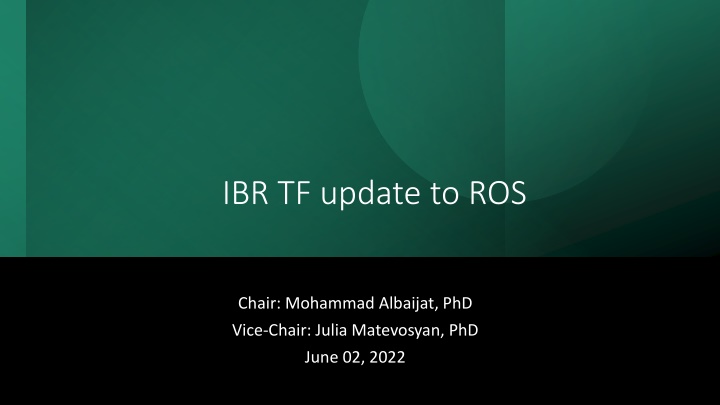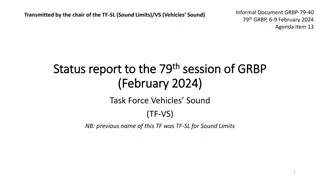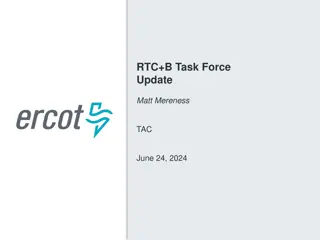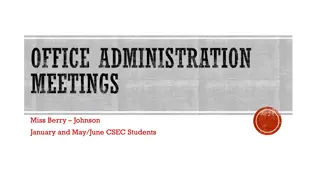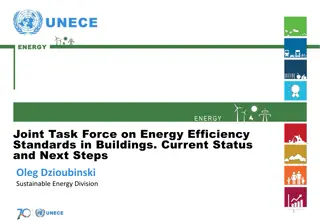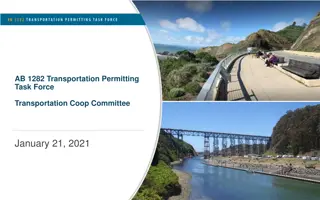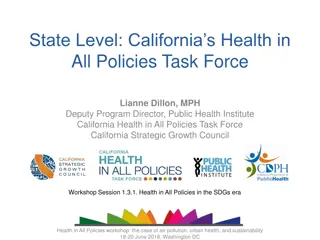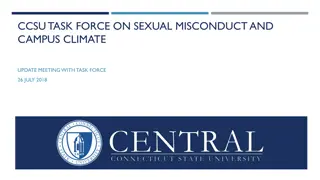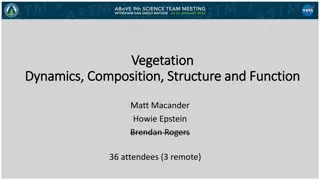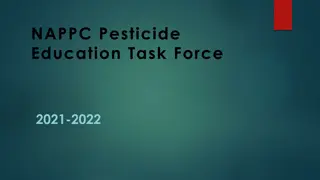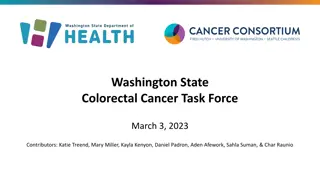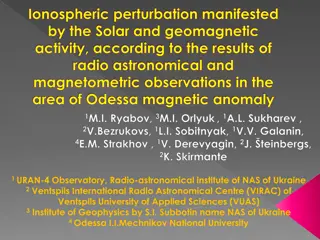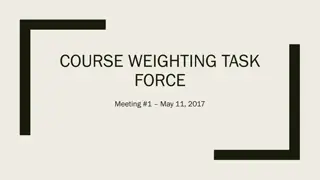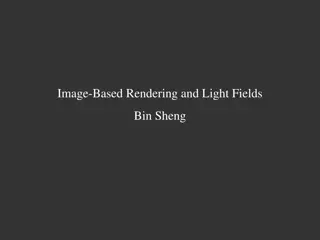Update on IBR Task Force Meetings and Odessa Disturbance
This update covers recent happenings in the IBR Task Force meetings, including discussions on NPRRs, NOGRRs, PGRRs, and a gap analysis between IEEE 2800 and ERCOT Nodal Protocols. It also provides insights into the Odessa Disturbance updates, actions taken by ERCOT, and IBR Ride Thru failures in April and May.
Download Presentation

Please find below an Image/Link to download the presentation.
The content on the website is provided AS IS for your information and personal use only. It may not be sold, licensed, or shared on other websites without obtaining consent from the author.If you encounter any issues during the download, it is possible that the publisher has removed the file from their server.
You are allowed to download the files provided on this website for personal or commercial use, subject to the condition that they are used lawfully. All files are the property of their respective owners.
The content on the website is provided AS IS for your information and personal use only. It may not be sold, licensed, or shared on other websites without obtaining consent from the author.
E N D
Presentation Transcript
IBR TF update to ROS Chair: Mohammad Albaijat, PhD Vice-Chair: Julia Matevosyan, PhD June 02, 2022
IBR TF meetings Four meetings February 18, 2022 March 18, 2022 April 8, 2022 May 23, 2022 May 23, 2022, meeting Gap analysis between IEEE2800 and ERCOT Nodal Protocols Status update on Odessa disturbance IBR Ride-Thru failures monthly updates NERC IBRWG and other industry updates NPRRs, NORRS, PGRRs update Questionnaire and guideline for new IBR interconnecting in ERCOT Discussed priorities and items for the following meeting (June 10th)
Update on NPRRs, NOGRRs, and PGRRs Next 5-10 days NPRR to address Communication of Capability and Status of Online IRRs at 0 MW Output. Is in final review Next 10-45 days NPRR to require capability to comply with IEEE P2800 for all new IBRs Is in SME review NPRR to require new IBRs to provide reactive capability at no real power output and existing IBRs to enable if capable Is in SME review Next 45-90 days NPRR and NOGRR to enhance ride through requirements Not started drafting soon IEEE 2800 Standards Vs. ERCOT Nodal: Gap Analysis Work in progress Primary Frequency Response ERCOT nodal protocols 8.5, ERCOT Nodal operating Guide:2.2.7 Turbine Speed Governors, ERCOT NOG Section 8 attachment C, Turbine Governor Speed test : Raise to 2800 and specify shorter PFR response time Fast Frequency Response Raise to 2800 and make FFR for UF capability mandatory Frequency Ride-Through ERCOT exceeds 2800 ACTION: continue gap analysis to be performed on ERCOT rules vs. IEEE 2800
Odessa Disturbance updates Overview of Recent Action Items ERCOT recently had follow up conference calls with REs of 6 solar farms that tripped during Odessa Disturbance for different reasons Call with OEM rep for momentary cessation and delayed reactive injection Sent out e mails to all plants with TMEIC inverters to verify loss of synchronism protection disabled Inverter Overvoltage Two plants reviewing possible k factor adjustments with TMEIC Plant 1: to provide PSCAD modeling to replicate event, tune model and ensure complies with PRC-02402 Plant2: no plan/time for adjusting K-factor/tuning. TMEIC has suggested increasing overvoltage trip to 1.4pu and momentary cessation above 1.25pu Inverter Underfrequency Single plant that had all inverters trip on underfrequency below 58.4 Hz Plant has submitted a plan to begin work on 6/17/2022 Momentary Cessation/Slow Recovery Other Remaining work Two plants with KACO inverters that were not able to identify root cause of trips during Odessa Disturbance ERCOT to meet with OEM that took over service of KACO inverters Follow up with plants to make sure they are capable of capturing data/logs/fault records for future events IBR Ride Thru Failures April-May Events 3 events in April/May in which possible system fault recorded by PMUs coincides with loss of solar generation Event 1 on April 8 was site forced offline by TSP due to grid issues Plant forced offline by TSP Breakers at station were opened No IBR performance issues identified Two events in May were same plants and similar causes as events on 1/20 and 2/17 Plant having issues with catastrophic MVT failures RE operates neighboring sites with same design issues ERCOT has had conversations with RE and will monitor Single plant with legacy inverters which cannot disable momentary cessation without risking equipment damage Plant installed new plant level control system Feeder Breaker Overvoltage Single plant that had all feeder breakers trip on overvoltage above 1.25pu RE to perform studies to verify if overvoltage protection is sufficient to ride through or needs to be relaxed Site increased reactive injection after POI voltage returned to nominal Site also had active power go to zero immediately following fault Feeder Breaker Underfrequency Single plant that had one feeder breaker trip on underfrequency < 57.5 Hz Plant personnel working with OEM to set voltage and frequency ride through curves to equipment tolerances instead of directly on No Trip Zones TMEIC PLL loss of Synchronism All 3 plants that tripped on loss of synch during Odessa Disturbance have disabled function
NERC and other Industry updates NERC: Multiple solar PV disturbances in CAISO Modelling Challenges and Recommendations IEEE2800 Adoption Webinars NERC MOD-026 and MOD-027 Utilizing Excess Capability of BPS-Connected IBRs for Frequency Support Upcoming ESIG Webinar: EMT Modelling and Simulation Event Page: https://www.esig.energy/event/webinar-emt-modeling-and-simulation-who-needs- an-emt-model-for-doing-stability-studies/ Upcoming ESIG Special Topic Webinar: Interconnection Study Criteria Upcoming ESIG Special Topic Webinar: Interconnection Study Criteria Upcoming Workshops, June 6-9, Denver Workshop 1: Meteorology & Market Design for Grid Services https://www.esig.energy/event/2022-meteorology-and-market-design-for-grid-services- workshop/ Workshop 2: Special topics : Grid Forming IBRs
Questionnaire and Guideline for new Inverter Questionnaire and Guideline for new Inverter Based Resources Interconnecting in ERCOT Based Resources Interconnecting in ERCOT Draft proposal and is not vetted draft for ready for formal proposal References that questionnaire based are: NERC guidelines, event reports and recommendations, IEEE and NERC standards, ERCOT nodal operating guides and planning guids Followed four core performance principals IBR GRs are expected to ride through with no loss of real or reactive power output during system disturbances IBR GRs are expected to provide and maintain positive sequence PSSE, TSAT, and EMT models that match their actual performance Minimum capability performance requirements does not necessitate tripping at just beyond those settings Unnecessary protection settings should be disabled to prevent erroneous or unnecessary trips
Questionnaire: Questionnaire: 1) Has the developer of the new IBR GR or ESR, read and implemented each of the NERC Guidelines related to Inverter Based Resources into its design? If not, please identify which specific guidelines are not incorporated into its design and why it does not apply or is not technically feasible to do so. 6) Has the developer of the new IBR GR or ESR confirmed with its OEM that its PLL loss of synch relay is or will be disabled if it is able to do so prior to energization? Please confirm if the IBR GR or ESR can disable its PLL loss of synch. 2) Has the developer of the new IBR GR or ESR, read and implemented each of the NERC Event Reports with Recommendations related to Inverter Based Resources into its design? If not, please identify which specific Recommendations are not incorporated into its design and why it does not apply or is not technically feasible to do so. 7) Has the developer of the new IBR GR or ESR confirmed with its OEM that its feeder protection relays are or will be disabled if it is able to do so prior to energization? Please confirm if and which feeder protection relays IBR GR or ESR can disable. 3) Is the new IBR GR or ESR a distribution level resource? If no, then mark NA. If yes, then has the developer of the new distribution IBR GR or ESR , read and implemented IEEE 1547 related to distribution level Inverter Based Resources into its design? If not, please identify which specific requirements are not incorporated into its design and why it does not apply or is not technically feasible to do so. 8) Has the developer of the new IBR GR or ESR confirmed with its OEM that its under frequency protection relay settings very fast setting has a time delay (e.g. .6 sec or greater) that would prevent erroneous frequency measurements from tripping off the inverter? Please confirm what this setting is. Please also identify any frequency measurement algorithm or filter enhancements that are being made to prevent erroneous frequency measurements. 4) Is the new IBR GR or ESR a transmission level resource (69kV POI or above)? If not, then mark NA. If yes, then has the developer of the new distribution IBR GR, ensured it can comply with IEEE P2800 standard related to transmission level Inverter Based Resources into its design? If not, please identify which specific requirements are not incorporated into its design and why it does not apply or is not technically feasible to do so. 9) Has the developer of the new IBR GR or ESR confirmed that the Power Plant Controller will not introduce any ramp or other limitations that prevent the IBR from returning to its pre disturbance MW value within one second after its inverter exits its ride through mode? 5) Has the developer of the new IBR GR or ESR, read and implemented PRC- 024-2 and Nodal Operating Guides Section 2.6.2 and 2.9 into its design? This includes the understanding that performance is based on voltages and frequency at the Point of Interconnection Bus and that the no trip zones do not mandate tripping when outside the no trip zone. If not, please identify what is being done to ensure compliance with the requirements. Please provide a comparison of the frequency and voltage ride through settings to the actual equipment limitations. 10) Has the developer of the new IBR GR or ESR confirmed the minimum MW level needed to ensure no oscillations will occur at very low MW levels? Please identify what this minimum MW level is and that settings have been coordinated to make this equipment limitation as close to 0 MW as possible.
Priorities and items for next meeting (June 10th) IEEE 2800 gap analysis update Update on Odessa event IBR Ride-Thru failures monthly update NPRR1138 Discussion Draft interconnection check list
